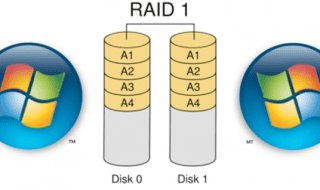
This pandemic has shaken the world to its core. From lockdown to businesses shutting down their doors for customers permanently, we have seen a lot. Even businesses who are operating during this time are asking their employees to work remotely. Businesses who have standardized procedures for remote work and work from home policies are fine but businesses that don’t have this liberty rushed to create one.
Even the top management such as CEOs, CIOs and CFOs are not ready for the sudden change. They have little to no experience of managing a remote or hybrid team. Asking them to suddenly change their management and leadership style was not easy for leaders. This increases the risk of adopting a wrong management style to manage your remote team, a move which can backfire.
In this article, you will learn about eight management approaches you should never adopt when managing a remote team.
1. Command and Control

If you are a manager who is measuring the productivity of your employees by counting the number of employees on their seats, then you need to change your management approach. Management and leadership experts suggest that you should measure the output instead of input. Instead of passing out orders from the back of the desk, you need to get your hands dirty and show your remote teams how it needs to be done. As a business leader, you should set an example for others to follow instead of you following others. Your remote team always look up to you for inspiration.
2. Micromanaging Employees
Remote work environment is completely different from traditional workspaces. Whether you are micromanaging traditional employees or remote workers, it will send a clear message to them that you do not trust them and do not have faith in their abilities. Not only does it irk your employees and increase employee turnover rate, but it can also throw managers off the path and they might also lose sight of the big picture.
According to John Rosemond, “Invariably, micromanaging results in four problems: deceit, disloyalty, conflict and communication problems.”
3. Over Communicating instead of Engaging

Unlike traditional office setup, your remote workers will feel lonely when they work from home. That is why most remote team managers tend to over communicate which is not a bad thing but the problem is that they only over communicate for the sake of over communicating and don’t try to engage with their employees at a personal level.
Try to be a little more thoughtful and intentional about making your communications more engaging. A common indicator manager uses is the amount of feedback. If you are not getting enough feedback from your remote workers, then there might be something wrong. Managers should start a dialogue with their remote team members, and you will see that your team will be much more engaged and feel more connected, which is critical when they are in isolation.
4. Constant Monitoring and Surveillance
Just like micromanagement, constant surveillance can backfire. Don’t ask your remote workers to keep their cameras on for zoom meetings all the time. This will subject them to Zoom fatigue. You don’t want your employees to feel exhausted from video calls.
Cedric Wells, Director of IT business solutions advises managers to “Give your employees a break from the extra mental processing that video calls require. Communicate to them when video is optional. Allow your teams to suggest what’s of interest to them when it comes to virtual socializing.” Doing this, will increase employee engagement and give them more freedom and flexibility.
5. Overburdening Workload

Just because your employees are working from home does not mean that you should overburden them with workload. Sadly, most managers are adopting this strategy which is having a negative impact on their remote workers. Instead, they should define goals for individual teams and create an environment for collaboration. Focus your budget and efforts on things that are important for you.
Isaac Sacolick, President of StarCIO pointed fingers at IT leaders when he said, “CIOs in particular fall into the trap of over-committing, over-promising, and over-asking their teams to do too many things at the same time to see what sticks. When you break that down to an individual contributor, they have seven, eight, or nine different things on their plates. That just does not work when everybody is working remotely. They are too stressed out. If you have nine things being done by six people, you’ve got 30 percent of it getting done.”
6. Showing No Empathy

One of the main characteristics of great leaders is empathy. Showing empathy is even more important when you are managing a remote team. Empathy is all about caring for other people’s needs and thinking about the problem others might be facing by putting yourself in their shoes. Showing empathy will strengthen your relationships with your employees.
Rich Theil, CEO of The Noble Foundry thinks that it is the best time for leaders to show empathy. According to him, “As challenging as COVID is, it represents an amazing opportunity to show your employees that you’re there for them. They already want to do good work. How much truer will that be when they see how much you care for them? It might be as simple as a quick encouragement or it might be bigger like paying for babysitting or sending lunch to help with the kids.“
7. Not Providing Necessary Resources

Just like managers, employees have not expected that they would be suddenly working from home. This sudden shift means that they have to create an office like space in their home where they can work. They might require all the hardware and software as well as other stable internet connections. You might require the best dedicated server to manage the workload. If you don’t provide the necessary resources, your remote workers could not deliver the same level of productivity that they did in the office.
Which management and leadership style do you adopt when managing a remote team? Let us know in the comments section below.




